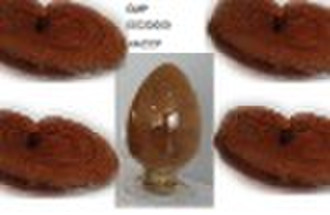Каталог
-
Каталог
- Автомобили и мотоциклы
- Безопасность и защита
- Бизнес
- Бытовая техника
- Бытовая электроника
- Детали машин и услуги по их изготовлению
- Дом и Сад
- Здоровье и медицина
- Игрушки и хобби
- Изделия из металла
- Измерительные и анализирующие приборы и инструменты
- Инструмент
- Красота и личная гигиена
- Мебель
- Мероприятия по охране окружающей среды
- Минералы и металлургия
- Модные аксессуары
- Обувь и аксессуары
- Одежда
- Освещение
- Подарки, сувениры
- Продовольственные товары и напитки
- Промышленное оборудование и техника
- Резина и пластмассы
- Сельское хозяйство
- Специальное оборудование
- Спорт, отдых и досуг
- Сток
- Строительство и недвижимость
- Текстиль и кожа
- Телекоммуникации
- Товары для офиса, учебы. Канцтовары
- Транспорт
- Упаковка и печать
- Химикаты
- Часы, Украшения, Очки
- Чемоданы, сумки
- Электронные компоненты, оборудование, принадлежности
- Электротехническое оборудование и принадлежности
- Энергия
Filters
Search

Рейши гриб экстракт
ориг. цена: 5,00 USD
Ханчжоу, Китай
Объем производства:
10 Тонна / Месяц

Kate Li
Контактное лицо
Основные данные
English NameReishi mushroom P.E (Plant Extract)Latin NameGanoderma lucidum (Leyss.: Fr.) KarstPart usedFruiting bodyDrying shrinkage (%)<8%ashes (%)<5%As (mg/kg)≤1ppmPb (mg/kg)≤1.5ppmMesh80Microbial standardArobic bacterial count (cfu/g) <1000cfu/gm E.coli(MPN/100g) N Microzyme (cfu/g) <100CFU/gm Mould(cfu/g) <100CFU/gm Pathogen becteriumN What is Reishi Mushroom?The reishi mushroom is a purplish-brown fungus with a long stalk, brown spores, and a fan-shaped cap with a shiny, varnish-coated appearance. Reishi grows on decaying wood or tree stumps, preferring the Japanese plum tree but also found on oak. The mushroom is native to China, Japan, and North America but is cultivated throughout other Asian countries. Cultivation of reishi is a long, complicated process. The reishi grows in 6 colors, each thought to have different characteristics and known as: Aoshiba (blue reishi), Akashiba (red reishi), Kishiba (yellow reishi), Shiroshiba (white reishi), Kuroshiba (black reishi), and Murasakishiba (purple reishi). What is Reishi Mushroom used for?Traditional/Ethnobotanical uses Reishi has been used in traditional Chinese medicine for more than 4,000 years for treating fatigue, asthma, cough, and liver ailments, and to promote longevity. The Chinese name lingzhi means “herb of spiritual potency.” A Japanese name for the reishi is mannentake, meaning “10,000-year-old mushroom.” Reishi's use is documented in the oldest Chinese medical text, which is more than 2,000 years old. Cultivation of reishi began in the 1980s. A survey conducted in Hong Kong found G. lucidum to be the third most common herbal preparation taken by preoperative surgical patients. General uses The polysaccharide content of reishi mushroom is responsible for possible anticancer and immunostimulatory effects. Reishi may also provide hepatoprotective action, antiviral activity, and beneficial effect on the cardiovascular system, rheumatoid arthritis, chronic fatigue syndrome, and diabetes. Few clinical trials have been conducted. What is the dosage of Reishi Mushroom?The Pharmacopoeia of the People's Republic of China recommends 6 to 12 g reishi extract daily. Ganopoly (a Ganoderma lucidum polysaccharide extract) in doses up to 5.4 g daily (equivalent to 81 g of the fruiting body) for 12 weeks has been used in a few clinical trials. Is Reishi Mushroom safe?Contraindications Contraindications have not yet been identified. Pregnancy/nursing Information regarding safety and efficacy in pregnancy and lactation is lacking. Interactions None well documented. Side Effects Adverse reactions are mild and may include dizziness, GI upset, and skin irritation. Toxicities There are few reports of toxicity with the use of reishi mushroom. References Reishi Mushroom. Review of Natural Products. Facts & Comparisons 4.0. http: / / online.factsandcomparisons.com / MonoDisp.aspx?monoID=fandc - rnp - 5229&inProdGen=true&quick=oats&search=oats. August 2008. Accessed October 14, 2008.
Условия поставки и упаковка
Packaging Detail: Packed in paper drum (25kg/drum, plastic Bag inner)Vacuummed aluminium bag (1kg/bag) Delivery Detail: One week
Порт: Shanghai
Условия оплаты
Аккредитив
Электронный перевод
-
Способы оплаты
Для оплаты товаров и услуг на нашем портале, Вы всегда получаете счет, в котором Вам необходимо самостоятельно указать свои данные.
Мы принимаем к оплате:








